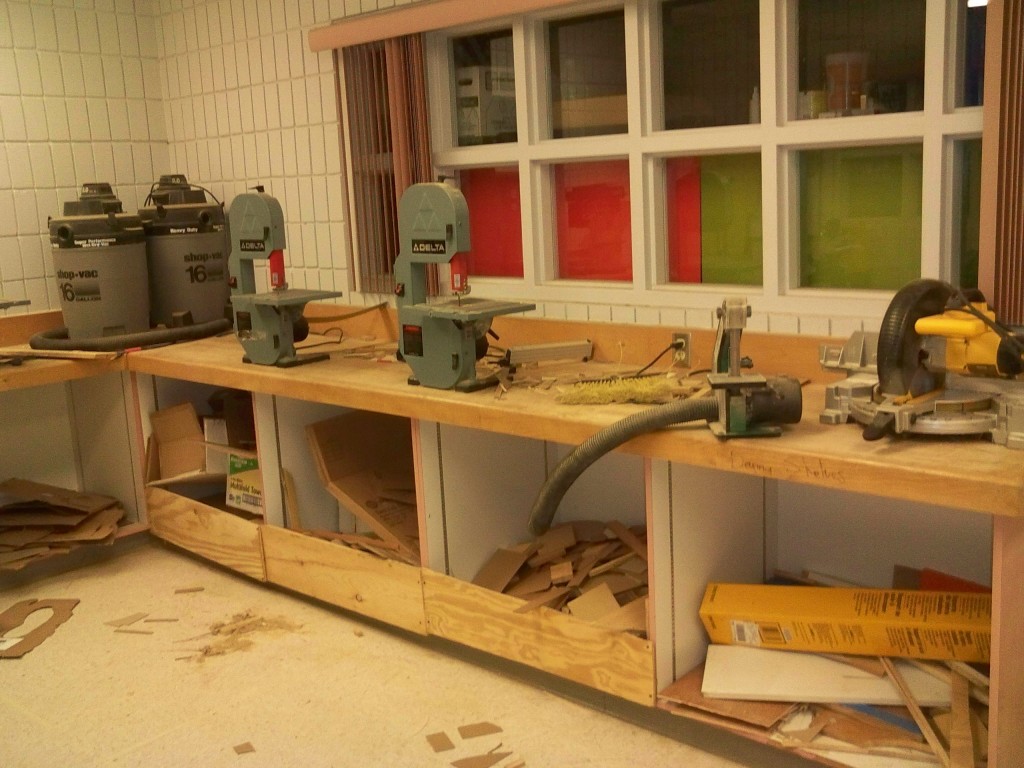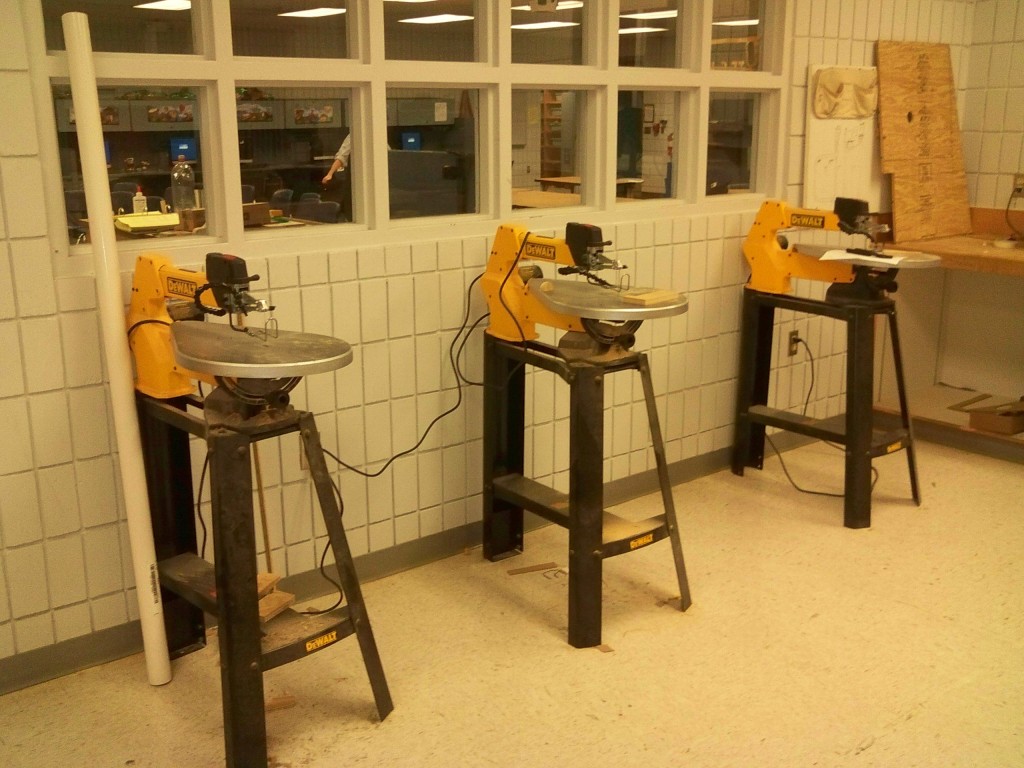Today is the first day of school here in Pinellas County, Florida. We’ve bought all of the school supplies for the kids, they have new shoes and some new clothes, and I think we may have the school lunch business taken care of. Of course, there are new car line patterns, bus routes and the works, but we’ll get the rest of the logistics taken care of over the next few days.
With the boys going to school, I’m sure there will be lots of math, English, science and other homework coming our way (though maybe not during the first week). But, there are many other lessons that need to be taught as well. One of them is at my oldest son’s school – technology.
Last year, I had a chance to teach at Michael Dority’s class during the Great American Teach In. I brought my tools, some wood, my video camera and proceeded to tell the kids a little about what I do in my shop. Turns out, the kids in Mr. Dority’s class were already hard at work doing their own woodworking!
With the new school year, I had a chance to ask Mr. Dority a few questions about the upcoming school year and the class he teaches.
First, of all, even with cuts in vocational education, how did he get into teaching this newer program in the first place? “I was studying Elementary Education at St. Petersburg college. When one of my professors noticed something in me and asked me to join this new program he was starting for the college, He really got me when he said robotics. I was a shipboard electrician before college and I had to visit a lot of boat yards while in the military I always marveled at all the mechanical stuff running and moving these mammoths ships and containers around the docks with cranes and dry docking system I would really get excited, when the boat started lifting up out of the water onto the block system the yards used. I wanted to share that excitement. My trade background actually helps me understand the class even better than if I had just gone straight onto college.”
In Mr. Dority’s class, there is a focus on four key areas: multimedia communications (computers), safety and tools uses, product design and laws of motion. As it turns out, one of the most effective ways he has to teach the kids about these areas is in woodworking. That’s because it all stems from STEM: Science, Technology, Engineering and Measurement. “Math is covered throughout the measurement processes, Technology is covered by student using tools to cut, chisel, and plane or sand the wood to a desired shape. Science is represented by; picking the material for use in a product, some woods will break and crack easily other woods are so durable that you can even twist and bend them. Engineering is represented through the students’ designs to create a plan for cutting and design the wood into the desired product.”
To make this happen, Mr. Dority has a fairly well appointed shop. “I love my shop because it is really set up for kids I have three DeWalt scrolls saws that have speed controls on them, and two 9 inch bench top Delta band saws, as well as one small drill press.”
While the tools are awesome, there is a very familiar first lesson that must be taught. “Safety is absolutely number one, there are tests and practical’s before anyone touches a machine by themselves and clothing restriction such as closed toed shoes and safety glasses are mandatory when in the shop area of my classroom.” And, as the kids start using the tools, there are some cues that Mr. Dority uses to gauge his students’ comfort level. “When many of the students first start cutting I try to be next them until they gain some experience on the tool they are using. One important rule I have though is if a student is afraid of a machine they do not have to actually use tools. The kids really enjoy this area of my room but because of the size of the shop I limit the amount of students inside of it at all times when machines are running.”
While Mr. Dority’s tech class may seem to be vocationally-minded at first, the skills he teaches reach way beyond the workbench – sometimes way beyond the workbench. “The main reason for tech is to get our student using their critical thinking skills to allow them to solve problems. It also provides our students practice in using their hands and their minds to solve problems, after all, even Doctors and Astronauts use tools and equipment everyday in their businesses.”
Mr. Dority even admits that much of his motivation is selfish. “I would love to hear the workshop and garages of our neighborhoods humming along with noise machinery instead of hearing that annoying buzzing sound coming from the computer and television sets.”
So, any parting words as we embark on a new year? “The most important thing though is if you know or see a kid that looks bored get him or her out in the shop. Start a project, keep it simple at first but many of my student surprise me all the time with their ability and skill.”



